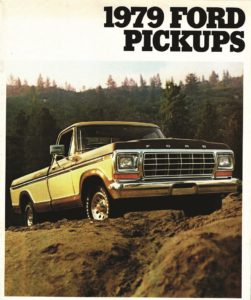This week brought mixed reports from my customers on the season of gift giving. You really appreciate your new wool socks. They are very nice. But you are, understandably, a little testy about the whole new car situation. Which is basically that you did not get one for Christmas this year.
Even though you could swear you saw a Ford F-150 muscling its way over the Rocky Mountains in an ad during the Patriots-Colts game, nobody around here, not even Santa, has been able to lay hands on one.
Which reminds me: I learned some new vocabulary this week. Have you ever heard of a “market adjustment?” That’s when the dealer adds a thousand or two to the sticker price for a new car. And it’s not even a car anybody really wants. But somebody is going to walk in and pay whatever the dealer is asking.

We all know about the computer chip shortage that is supposedly the culprit. But whatever the cause, I’m going to keep calling the result “jacked-up prices.”
On Monday, the New York Times reported that data from Edmunds show the average price of a new car hit a record high in November of $45,872. The auto data company expects the average price of a used car to top $30,000 in the new year.
Good used cars have always been hard to come by here in the land of salt sea air and rust. One customer told me about a good friend who, after years as a used pickup guy, recently transitioned to being a minivan person. The guy flew down to Florida the week before last to pick up a 2015 Toyota Sienna and drive it back to Eastham. And his wife is not even mad at him for skipping out on gift shopping. How could she be?
Here is how all this relates to your New Year’s resolutions. Whatever you are planning to do better this time around, the one thing I’m advocating for is this: car maintenance.
Since I can tell from experience that some of you do not actually know what I mean by this, I’ll explain. Car maintenance is not that complicated. And it will help you keep your old car on the road, safe from market adjustments.
Tires: You don’t have to change them out seasonally. But please stop driving with the tire pressure warning light on. Get yourself a digital pressure gauge and check and correct your tire pressure once in a while. If you don’t know how to do this, your mechanic will show you.
Oil: If you have a reasonably new car, it will alert you when an oil change is needed. Otherwise, glance at the little sticker your mechanic put in the upper left-hand corner of the windshield — when was that, a year ago? I hope it was more like six months ago. It’s a reminder about one of the most important things you can do to extend the life of your car — change the oil about once every 5,000 miles.
Other factory maintenance recommendations: It’s OK to skim, not read, when it comes to your car’s owner’s manual. Most people have never read theirs. But, at the least, open it up and look for a section on maintenance where you’ll find a schedule for what your car needs when — oil filter change, tire rotation, and so on. Your car should be getting some maintenance once or twice a year.
Body work: As I have mentioned to more than one customer, try not to hit things with the car. We don’t have a lot of body shops out here. But if you do have damage, please go ahead and get it fixed. The duct tape approach is not going to be safe, and in the long run it’s going to lead to rust taking over and reducing the life of your car.
That smell: This one is not actually in the manual. But if you are going to live with your car for a good long time, maybe you should consider making it a decent place for a friend or mechanic to ride in. Vacuuming will prevent sand from wearing holes in your carpet and, eventually, grinding into your floorboards, opening the way for rust. And would it really be too much to ask you to notice whether your car smells like rotting garbage? When you discover that it does, please resolve to wipe down the upholstery with a mild soap solution.
The list of customers I’ve turned away for skipping this last maintenance item is short, and I’d hate to see you on it.



